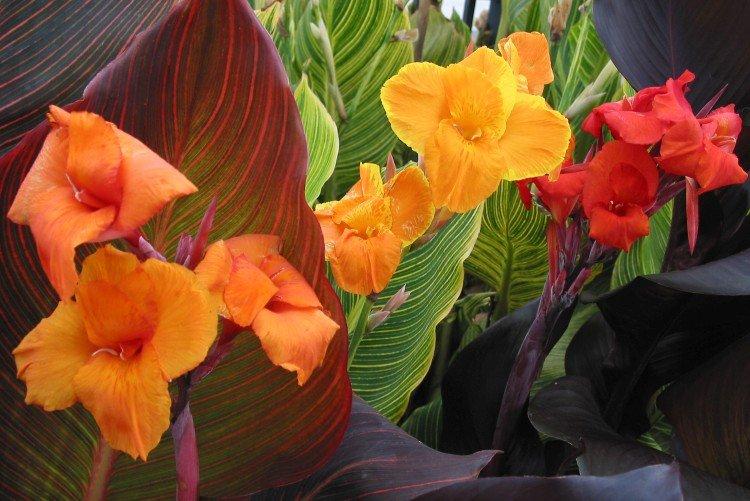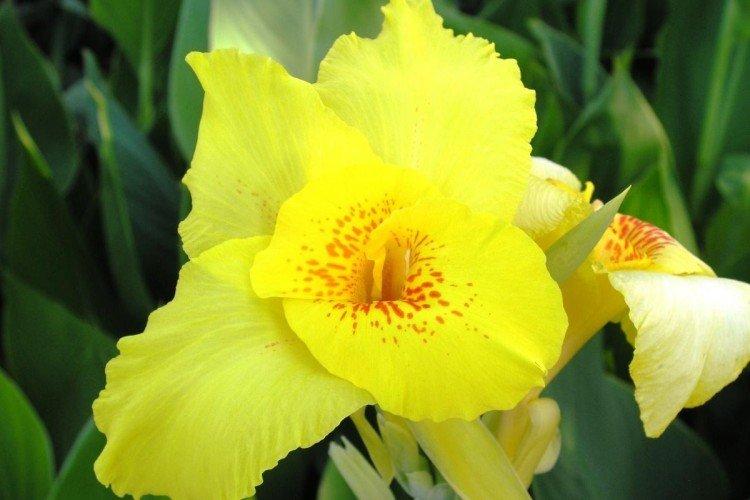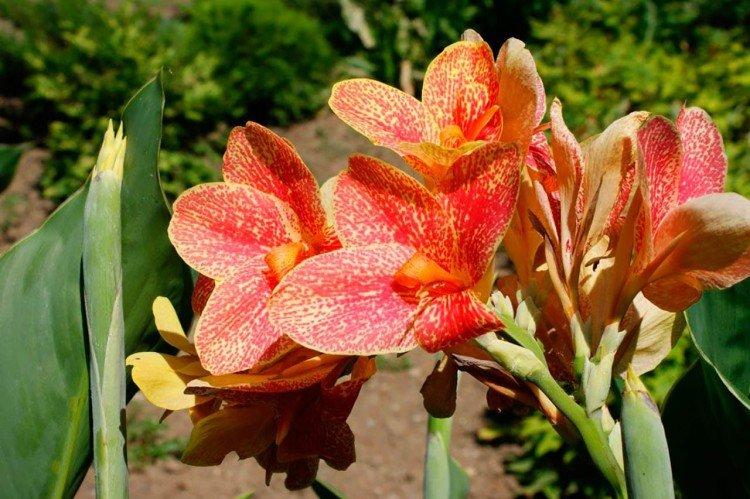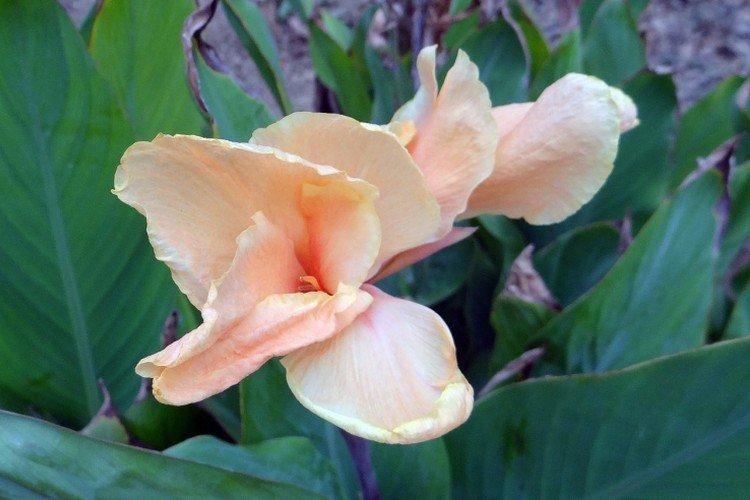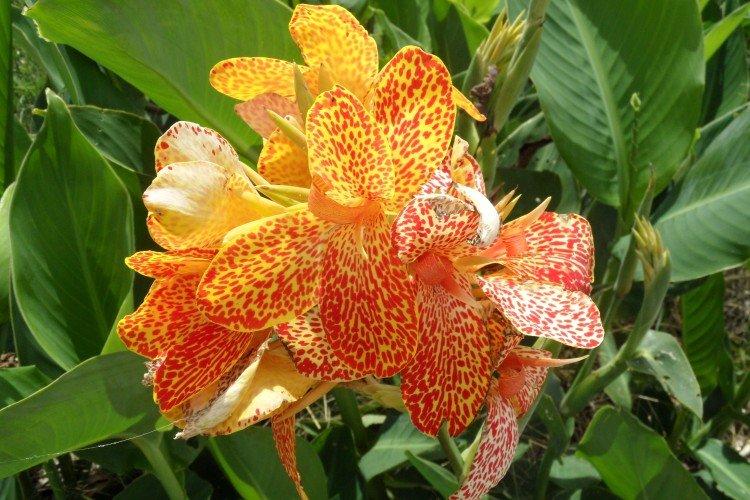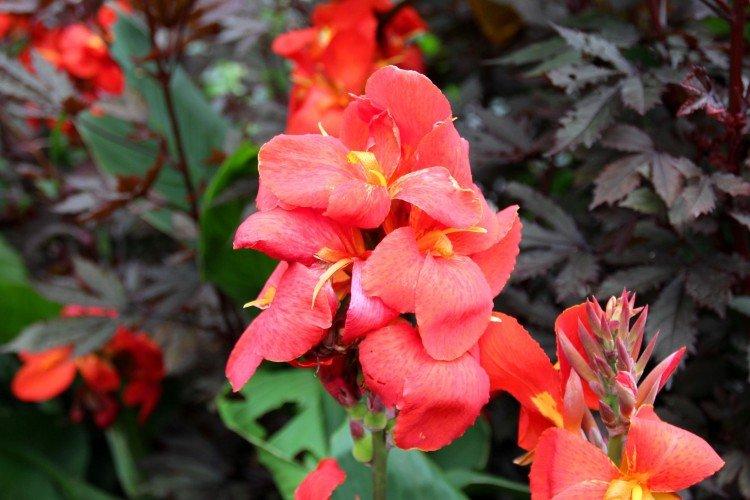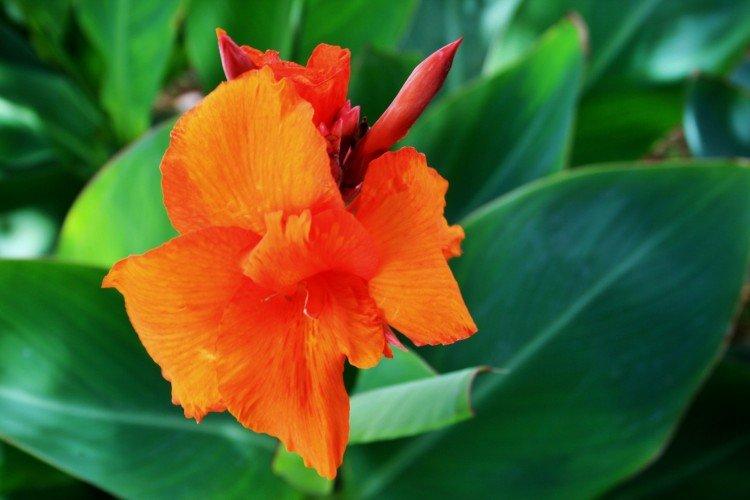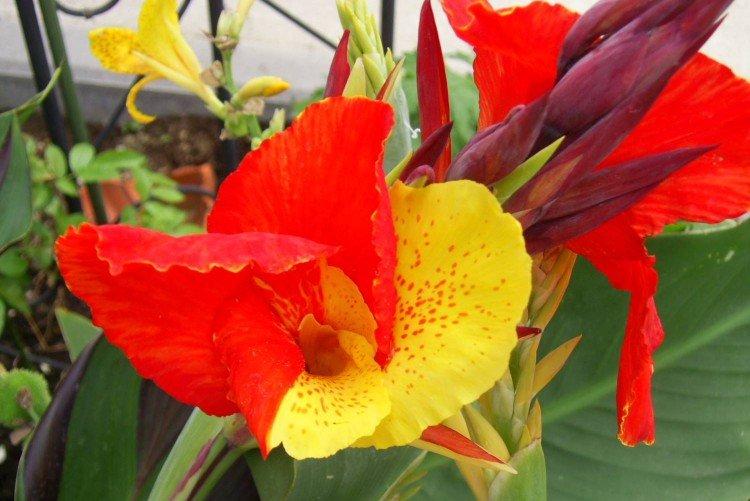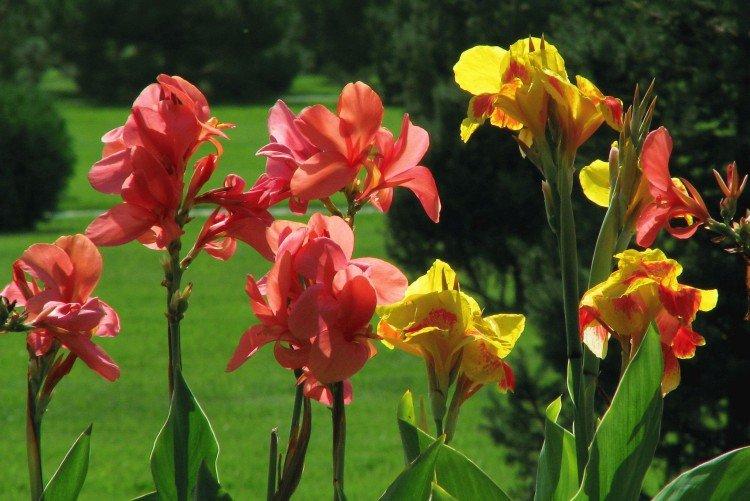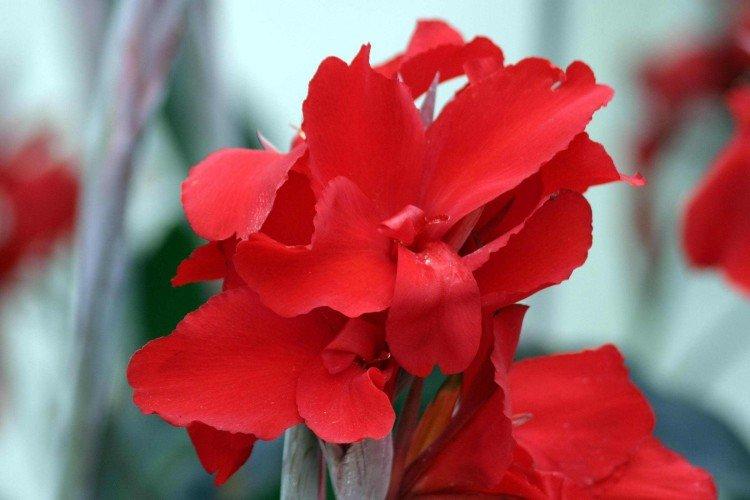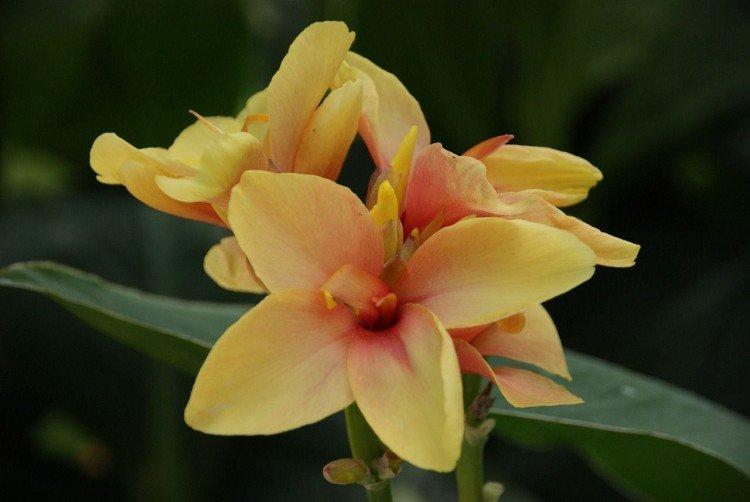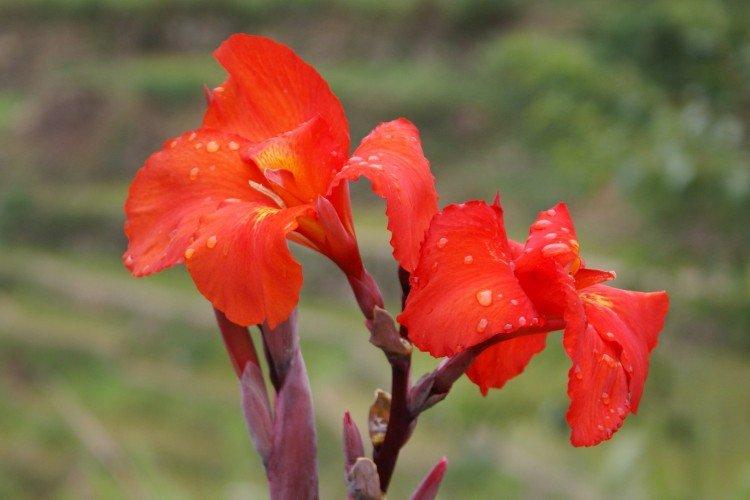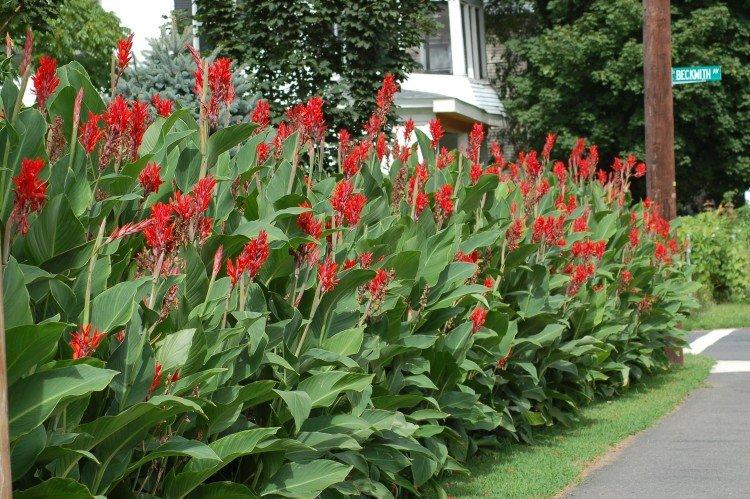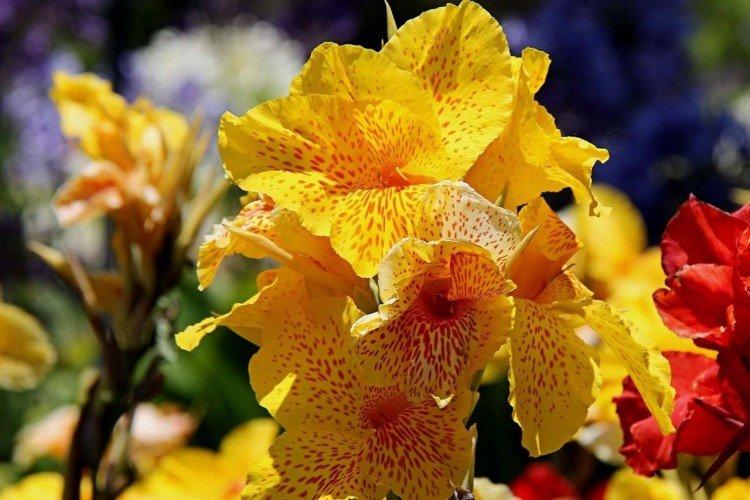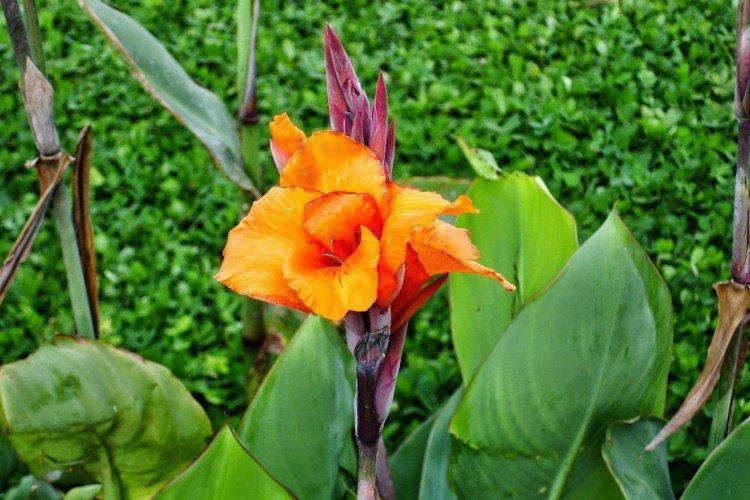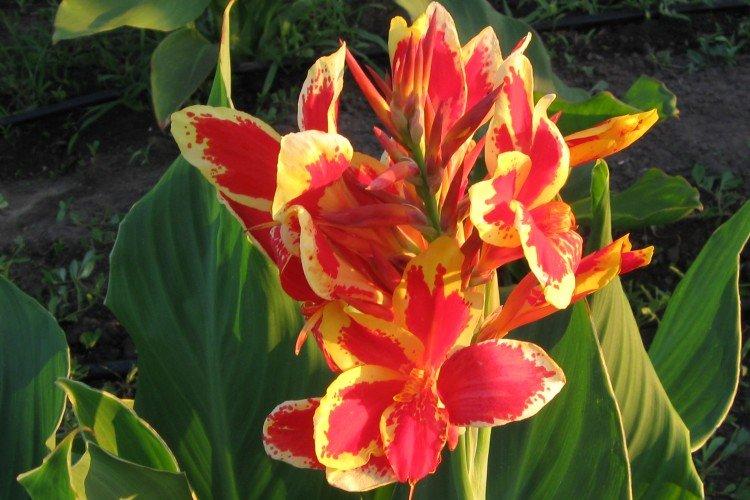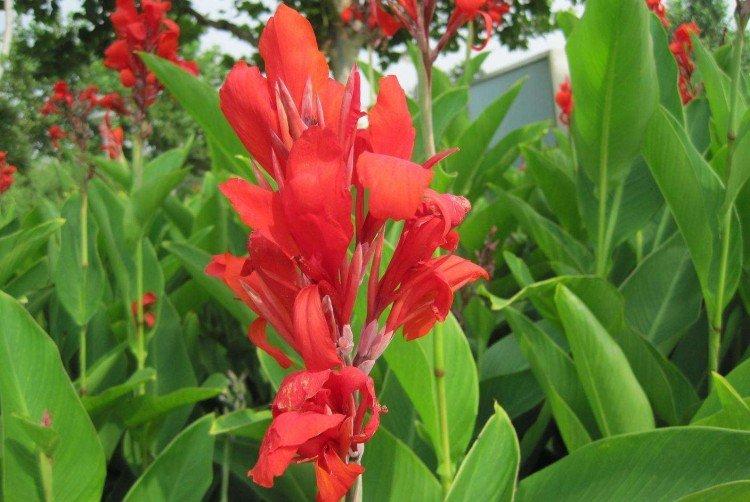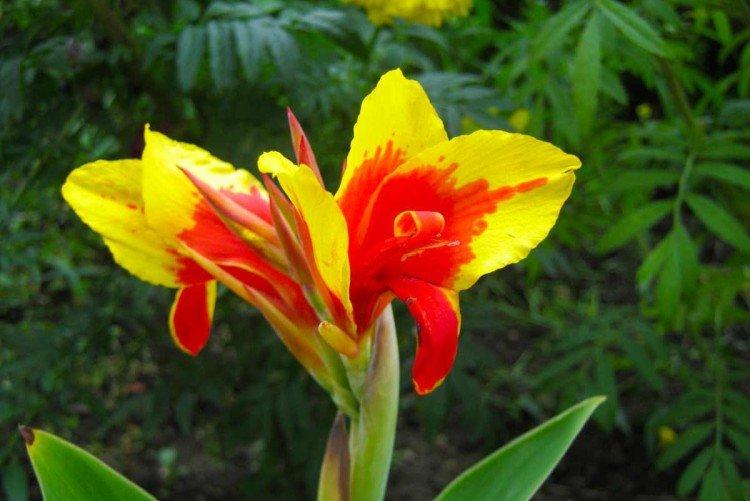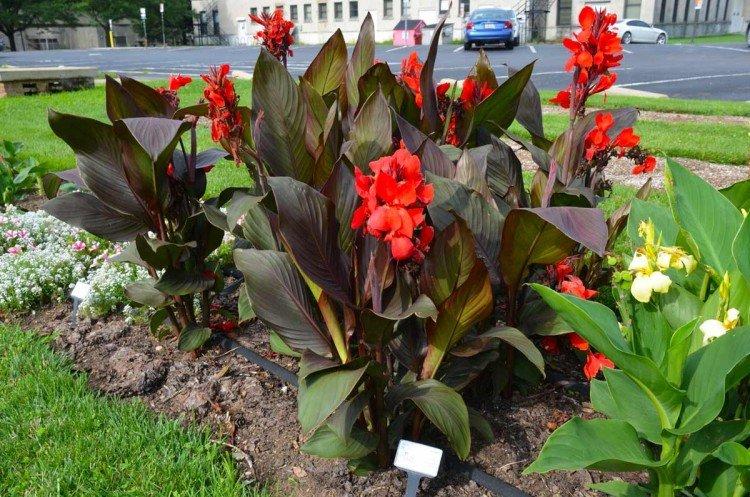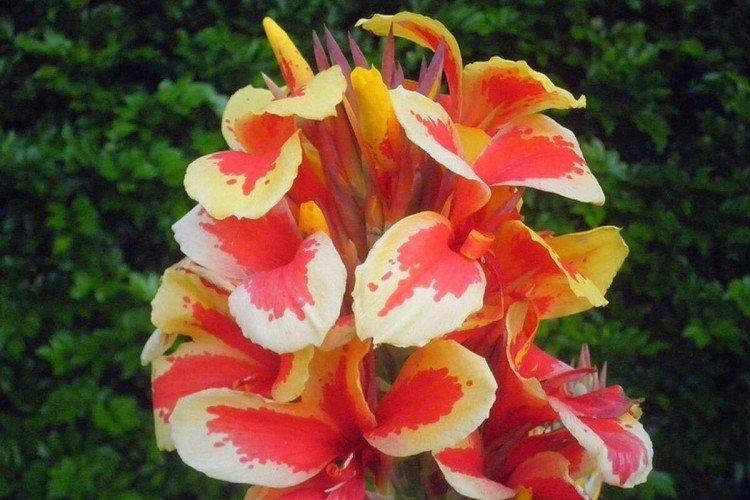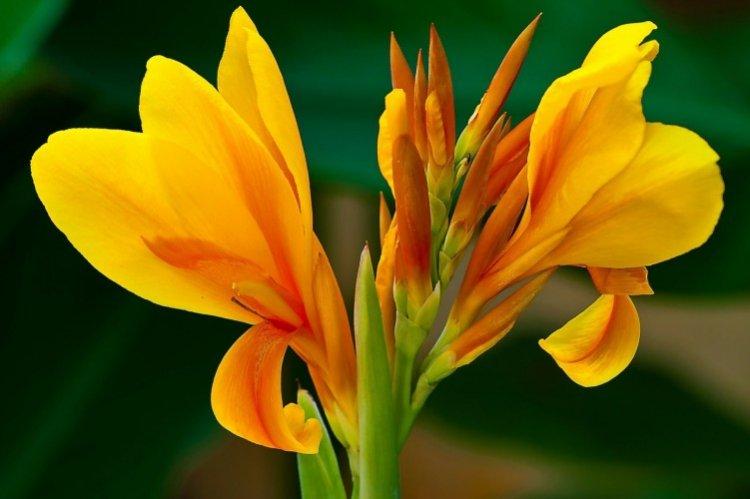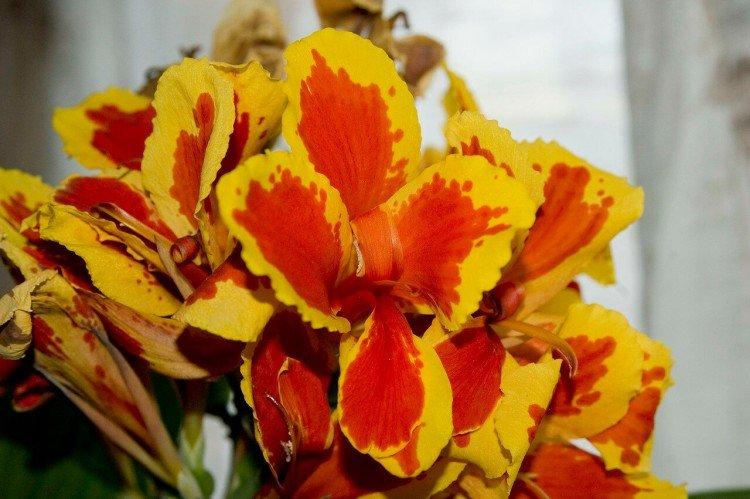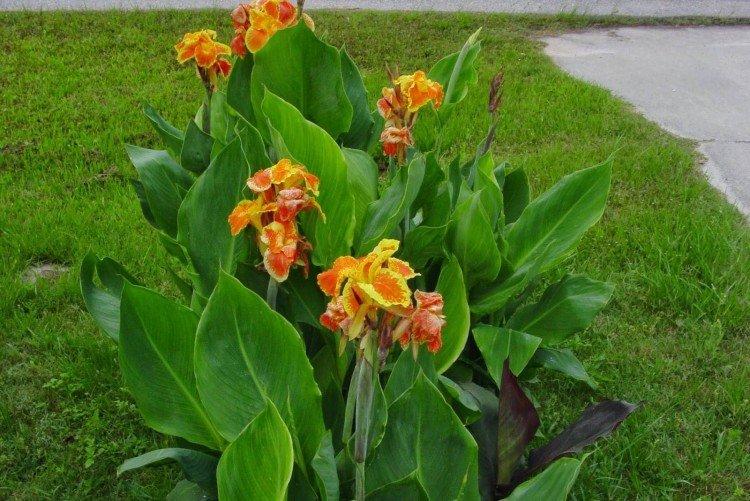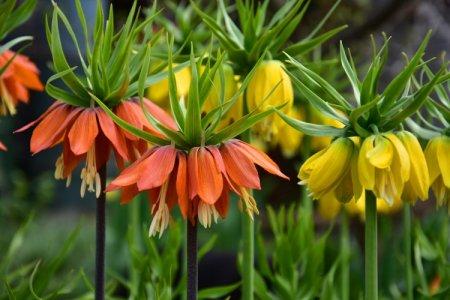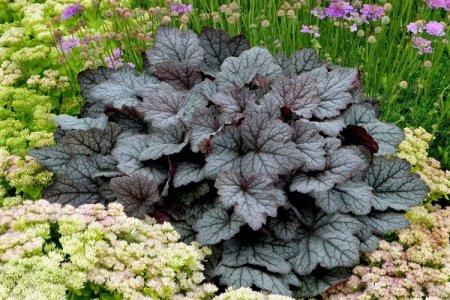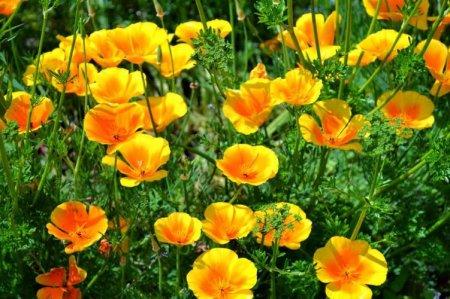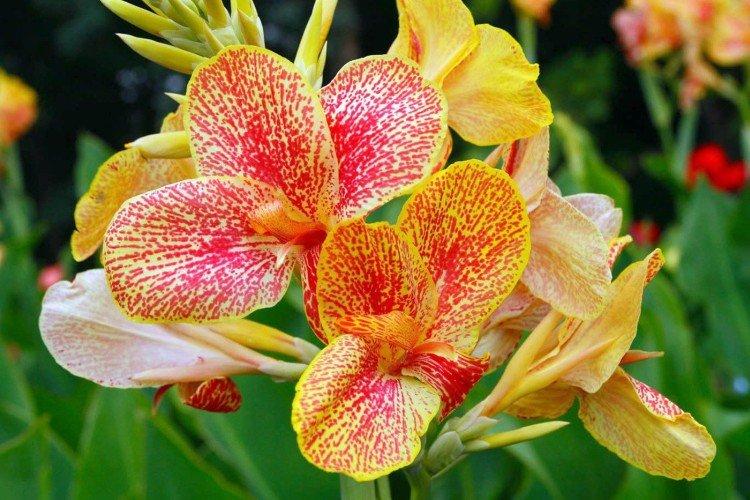
The tropical canna flower is one of the brightest and most exotic inhabitants of the garden. He has decorative leaves and the same decorative flowers, for which he is adored by flower growers all over the world. And in the industry, canna is a source of valuable starch. And today we want to tell you more about it!
general information
Kanna is a family of the same name, and has a lot in common with the usual ginger. It was brought to Europe by sailors from the warm regions of America and Asia. The stem of the canna resembles a reed, and this is how its name is translated from Greek.
There is a legend that the canna is a fiery flower that symbolizes the beginning of the war. Indeed, its crimson petals resemble tongues of flame. The powerful starchy rhizome of the plant allows it to adapt to different conditions.
Canna leaves with a silvery bloom can be not only green, but also bluish, red or purple. The flowers are a bit like gladiolus or orchids, and may well compete with them in beauty. Average size - up to 8 cm.
Cannu can be grown not only outdoors, but also in pots. The main features of care remain the same, but in the room she is not so capricious, she is less likely to get sick and is less troublesome.
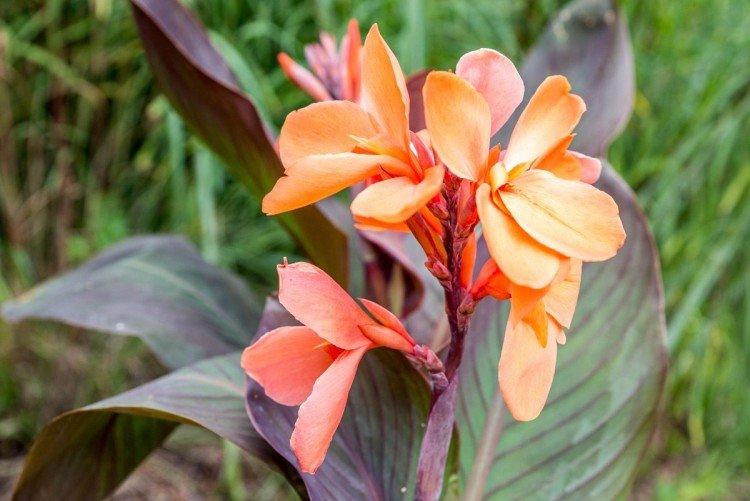
Cannes views
Traditionally, cannes are red, but over the years, breeders have managed to breed many colored varieties. All of them are distinguished by long flowering and amazing beauty.
Indian canna
It is obvious from the name that she came to us from India. It is a slow-growing perennial with a straight stem up to 2 m high. Wide dense leaves and large tubular flowers radiate from it.
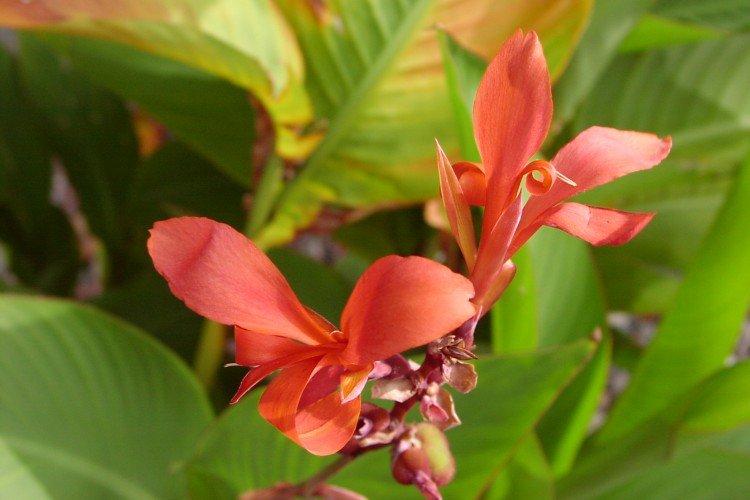
Low canna
Chinese variety with large red or red inflorescences and bright green leaves. The diameter of one opened bud reaches 10 cm.
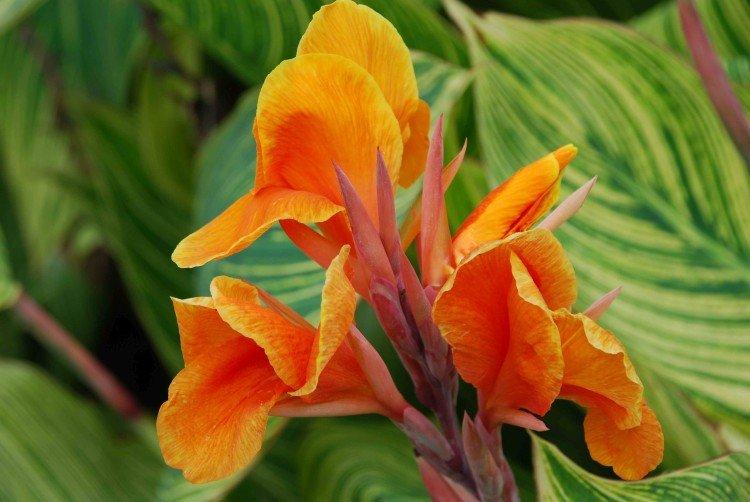
Hanging canna
It is a moisture-loving species that thrives on swamps and even off the coast. Such a canna is more compact, up to 1.2 m, and also differs from its relatives by a vertical rhizome.
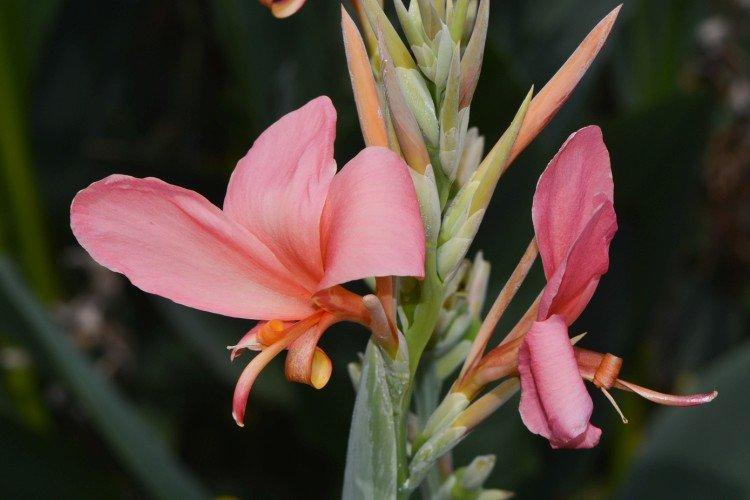
Orchid canna
This is the group of varieties that most closely resemble orchids. They can be very small, up to 50 cm, and real giants of 2 m. Orchid cannes have large green or purple leaves.
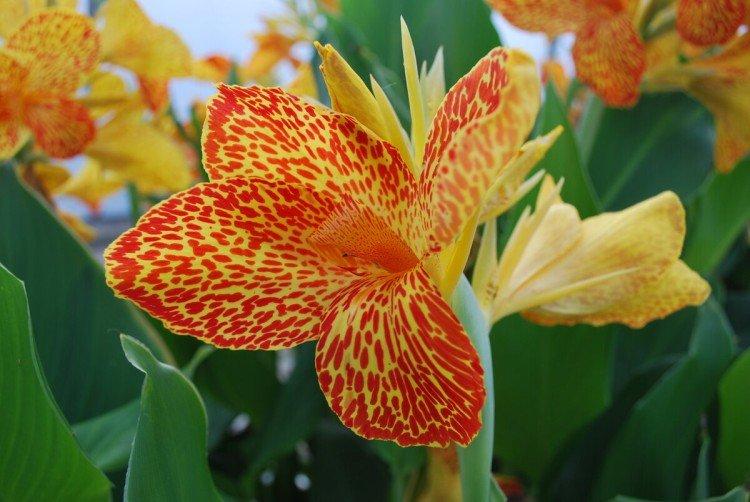
Garden canna
This category includes garden hybrids that are valued for their decorative properties. It is here that the most interesting and unusual colors of both petals and leaves are found.
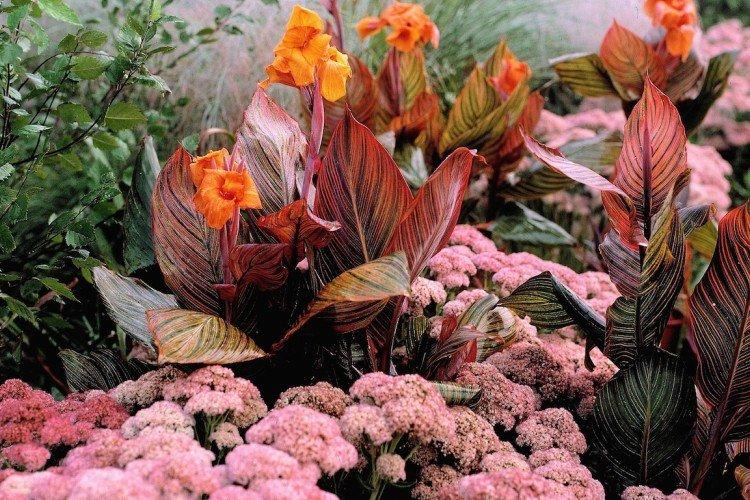
Deciduous canna
This is the tallest and tallest variety, which can stretch up to 3 m. It is planted mainly as an ornamental deciduous plant, because its flowers are quite small.
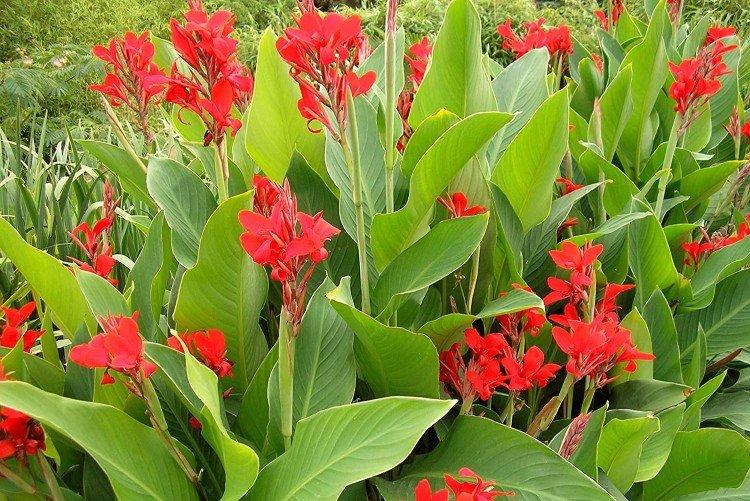
Canal care
Canna is a very controversial flower. In some issues, she is categorical and demanding, and in some she does not need the participation of a gardener at all. Do you want more specifics? Here you go!
Temperature
The heat-loving canna can grow in almost any region, but the comfortable temperature for it is about +23 degrees. The main thing is to avoid winds and drafts, because they have a bad effect on the plant's immunity.
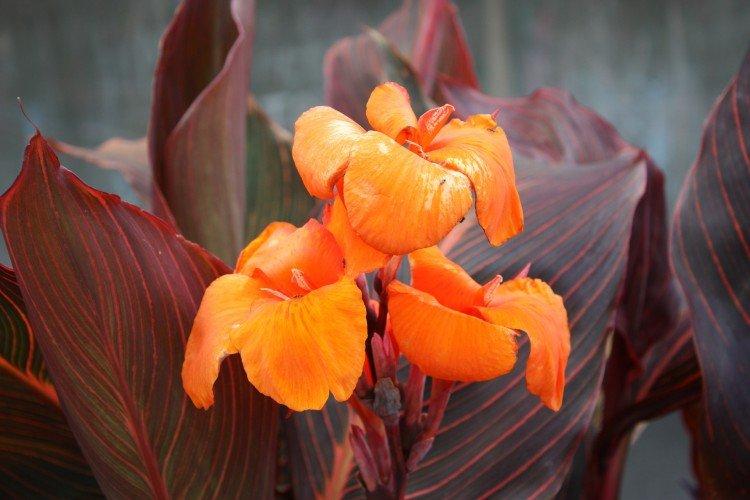
Lighting
Canna needs stable lighting for at least 6-8 hours a day. That is why home flowerpots need additional lighting in autumn and winter. There is no such problem in the garden. But if the cannet does not have enough sun, you will immediately understand it by the faded leaves.
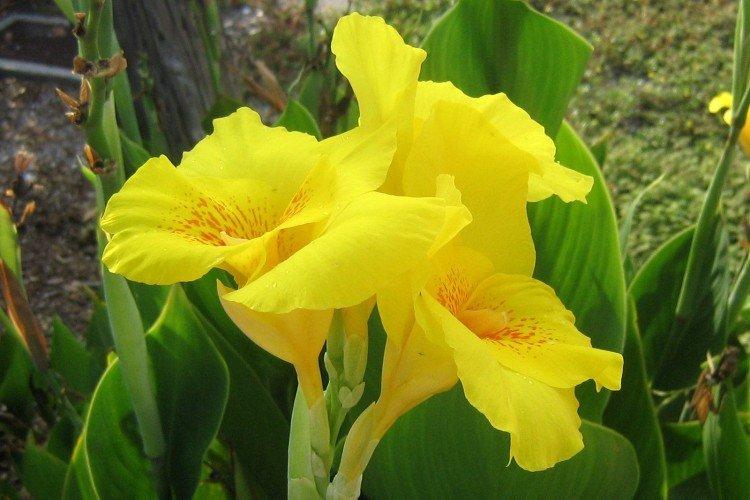
Watering
Before the appearance of the first peduncles, the cannu is watered regularly, but in moderation. After that, increase the frequency, but make sure that no water stagnates in the roots.
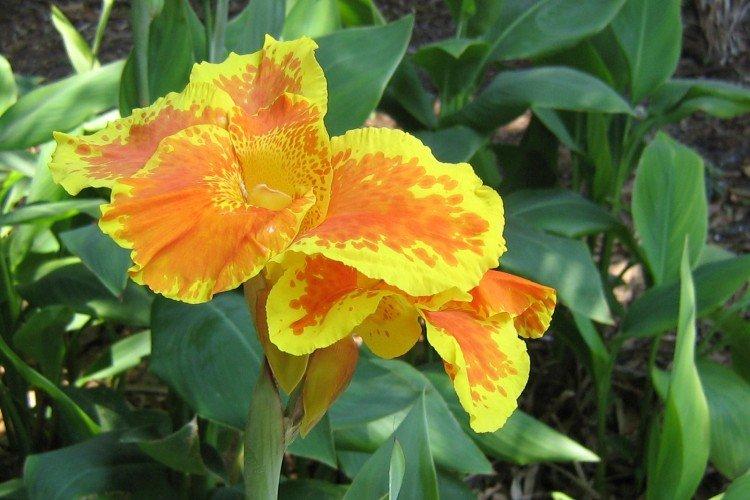
The soil
If cannes are very demanding on the sun and warmth, then on the soil - quite the opposite. The main thing is that the earth is sufficiently loose and moderately moist. Therefore, many varieties are good even near water bodies. And don't forget to weed regularly.
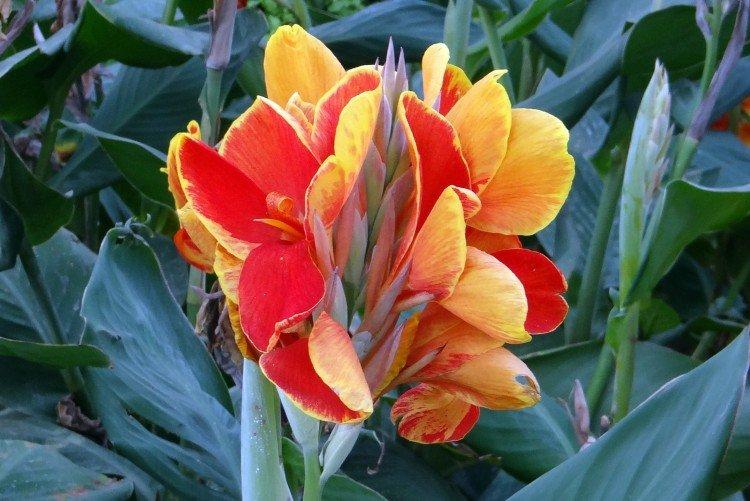
Fertilizers and feeding
Several times a season, the cannu needs to be fed with mineral fertilizers. We recommend using granules with a complex composition - nitrogen, potassium and phosphorus.
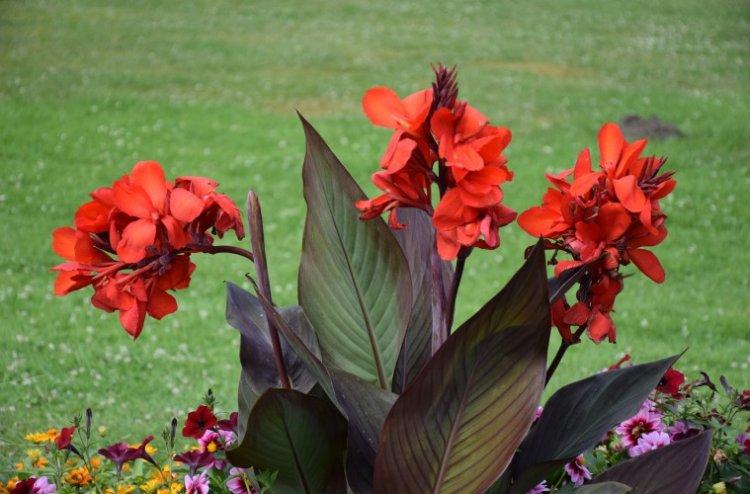
Cannes after flowering
All faded buds must be removed immediately. Before the first frost, the bushes are huddled high to protect the root collar from cold snaps. After flowering, gradually reduce watering and bring it to zero.
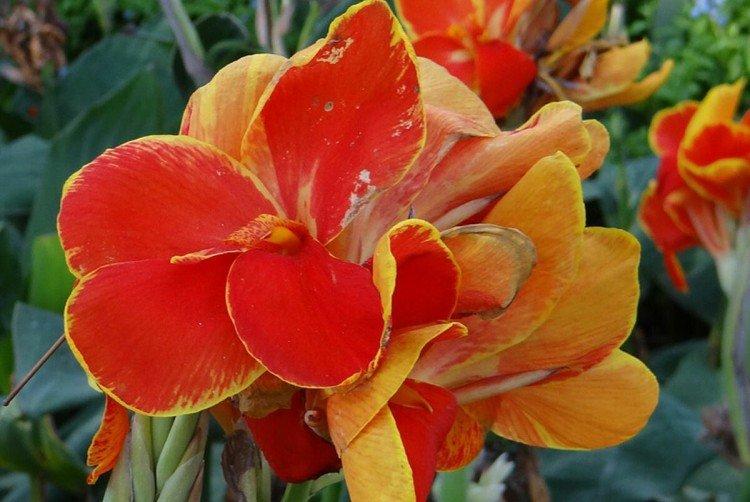
Wintering and storage
After the first frost, cut the plants and leave the shoots up to 20 cm. Carefully dig out the root and store the bushes in a cool place until next spring. They are usually stored in wooden boxes filled with sand, peat and sawdust. Occasionally they need to be watered and monitored for rot.
In warm regions, Cannes can winter right in the garden. But the tubers still need to be dug up and folded onto a site that will definitely not be flooded with melt water in the spring. Protect them from the wind and cover them with a 20 cm thick layer of sawdust.
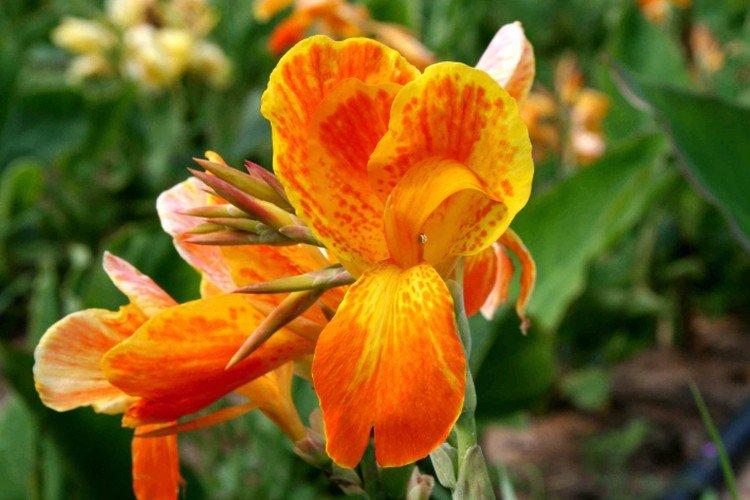
Planting and breeding
Cannes are planted in early June, when the risk of frost has finally passed. This applies to both seeds and seedlings. But the flower is rarely propagated by seeds, because it is difficult and long at home.
The easiest and safest method is to divide the tuber. At the beginning of spring, you need to remove the mother plant from storage and divide into shoots that are freely separated. Each should have at least 1-2 buds.
Spread the pieces of the divided tuber in the greenhouse or under a plastic sheeting and spray periodically. In May, they were gradually transferred to peat or sawdust, but continue to store in a warm and humid place.
After that, seedlings of delenki in large boxes of sand, moisten them strongly, and after 1.5 weeks they will become overgrown with roots and begin to develop. As soon as leaves appear, increase the amount of lighting. And all this time, maintain a stable temperature of about +16 degrees.
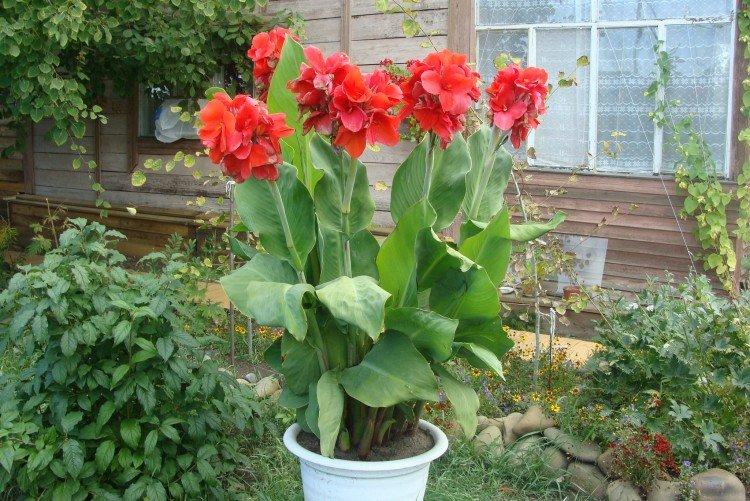
Pest and disease control
Cannu can hardly be called an unpretentious flower with impeccable immunity, so, unfortunately, you will have to tinker with it. The most common problem is rust, which appears as yellow-red spots on the leaves. The second trouble of cannes is sulfur rot, which is why the shoots stop developing and become covered with a gray moldy bloom.
Both of these diseases are different types of fungi. So the treatment is the same: remove damaged fragments, reduce watering and treat the plant with fungicides. Basically, fungal diseases appear due to an excess of moisture, thickening of the plantings and improper storage of the bulbs. So the best prevention is following the cannabis care recommendations.
Viruses are difficult to notice and most often it is pointless to treat, so it is better to destroy diseased flowers immediately. Variegation appears as black dots and stripes on leaves and flowers. Mosaic - in the form of chaotic pale spots.
The most common canna pests are caterpillars and slugs, which eat leaves and flower stalks. Here we need mechanical cleaning and treatment with preventive drugs. Folk remedies and infusions of tobacco or fragrant herbs help well against aphids.
The best prevention for spider mites is spraying flowers during periods of drought. But if that doesn't work, insecticides are needed. The most dangerous are nematodes that settle in the roots. It is almost impossible to get them out, but the invasion can be prevented. To do this, always decontaminate the bulbs and soil.
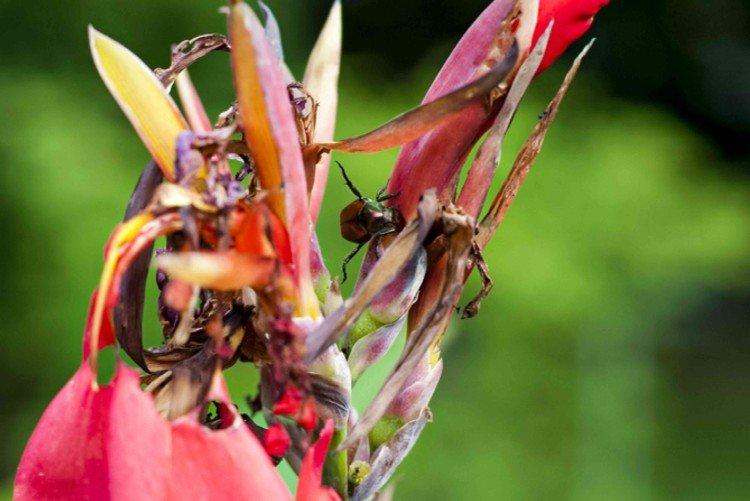
Canna - photo
It is simply impossible not to notice the eland in the garden. The exotic beauty instantly falls in love with herself. Just look!
